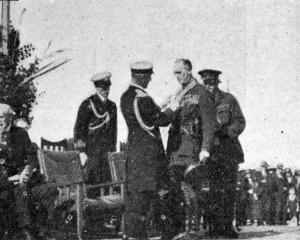Mr Grapes said that New Zealand was in the proud position to-day of being in the van of postal organisation. The dominion had led the way with penny postage, while the reduced parcel rates which came into operation on January 1 of this year were the lowest in any oversea part of the British Empire.
Mr Grapes stated that New Zealand had the largest fleet of motor postal vehicles in Australasia. They were giving such satisfaction in Wellington that eight heavy lorries were now employed there carrying mail matter. The last horse was sold from the department's stables early last December. Four companies had recently been formed in New Zealand to exploit the possibilities of the motor omnibus. These were the Hastings Transport Company, Waikato Motor Transport Company, Manawatu Company, and the Kelburne-Karori Company.
In the South Island, other than the pioneer motor service recently instituted at Mornington, the town of Timaru was the only place to seriously entertain this method of transport. There it was proposed, if the scheme were approved of by the ratepayers, to place five 'buses in commission. As regards the modern motor 'bus, its general advent had been greatly delayed through the premature attempts made with experimental machines in the dominion some eight or ten years ago, and which did not meet with a great deal of success. The motor 'bus even now suffered as much from its friends as from its enemies, as few people seemed to grasp its limitations as well as its possibilities. Given a reasonably good road, constructed of water-bound macadam efficiently rolled, or the same class of road tar-spread, and the motor 'bus proved itself a most satisfactory form of transport.
Evidence of this, remarked Mr Grapes, had been given in Dunedin, where the Mornington Council's 'bus had in a period of five weeks carried 21,353 passengers, the distance covered being 2408 miles. In other parts of the dominion the impression was sometimes conveyed that the people of Dunedin were too conservative, but it must be laid to the credit of the city that it had been the first to see the potentiality of this form of locomotion.
• The new steamer which the Union Steamship Co. has ordered for the Wellington-Lyttelton ferry service, the Wahine, is generally similar to the Maori. Her principal dimensions are: Length 374ft, breadth 52ft, depth 27ft 6in. Accommodation is provided for 400 first class passengers, and about 180 second class. The propelling machinery consists of three sets of turbines, supplied with steam from water-tube boilers. Turbines and boilers are by Messrs Denny and Brothers, the builders, in whose yards at Dumbarton the Wahine took the water this week. - ODT, 9.1.1913.
• COPIES OF PICTURE AVAILABLE FROM ODT FRONT OFFICE, LOWER STUART ST, OR WWW.OTAGOIMAGES.CO.NZ












